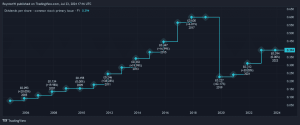Oil futures rebounded Wednesday as NATO’s chief said Russia’s military buildup around Ukraine continued, while Moscow said it continued to return troops and equipment to bases.
Official U.S. weekly supply data will also be in focus after an industry trade group late Tuesday reported a drop in U.S. inventories.
Price action
-
West Texas Intermediate crude for March delivery
CL.1,
+1.19% CLH22,
+1.19%
rose $1.40, or 1.5%, to $93.47 a barrel on the New York Mercantile Exchange. -
April Brent crude
BRN00,
+1.35% BRNJ22,
+1.35% ,
the global benchmark, was up $1.52, or 1.6%, at $94.80 a barrel on ICE Futures Europe. Both WTI and Brent closed Monday at their highest since September 2014. -
March natural-gas futures
NGH22,
+6.62%
rose 7% to $4.609 per million British thermal units. -
March gasoline futures
RBH22,
+0.61%
rose 1.1% to $2.6977 a gallon, while March heating oil
HOH22,
+0.58%
rose 0.9% to $2.8862 a gallon.
Market drivers
Oil set back Tuesday after Russia said it was returning some troops to base after completing military exercises. On Wednesday, Moscow said more units were being pulled back.
But NATO Secretary-General Jens Stoltenberg on Wednesday said there were no signs of any de-escalation on the ground. “On the contrary, it appears that Russia continues the military buildup,” he told reporters ahead of a meeting of NATO defense ministers in Brussels.
U.S. President Joe Biden on Tuesday said that a Russian pullback had not been confirmed and that an invasion remained “distinctly possible.” Biden warned that punitive sanctions planned for Russia in the event of an invasion could push up energy prices.
“We’re preparing to deploy all the tools and authority at our disposal to provide relief at the gas pump,” he said.
Uncertainty around Ukraine means the oil market “will likely continue to price in a fairly large risk premium,” said Warren Patterson, head of commodities strategy at ING, in a note. “The uncertainty around how the situation evolves does not stop there. If the situation was to escalate, it is not clear how the U.S. and EU would react in terms of sanctions and whether the Russian oil industry would be targeted.”
The American Petroleum Institute reported late Tuesday that U.S. crude supplies fell by 1.1 million barrels for the week ended Feb. 11, according to sources. The API also reportedly showed weekly inventory declines of 923,000 barrels for gasoline and 546,000 barrels for distillates. Crude stocks at the Cushing, Okla., delivery were down by 2.4 million barrels last week, sources said.
Inventory data from the U.S. Energy Information Administration will be released Wednesday. On average, the EIA is expected to show crude inventories down by 200,000 barrels, according to a survey of analysts conducted by S&P Global Platts. The survey also calls for weekly supply declines of 900,000 barrels for gasoline and 1 million barrels for distillates.
This post was originally published on Market Watch






